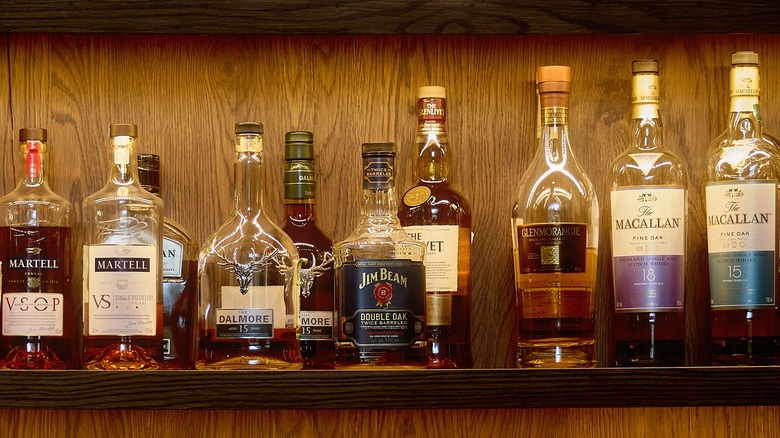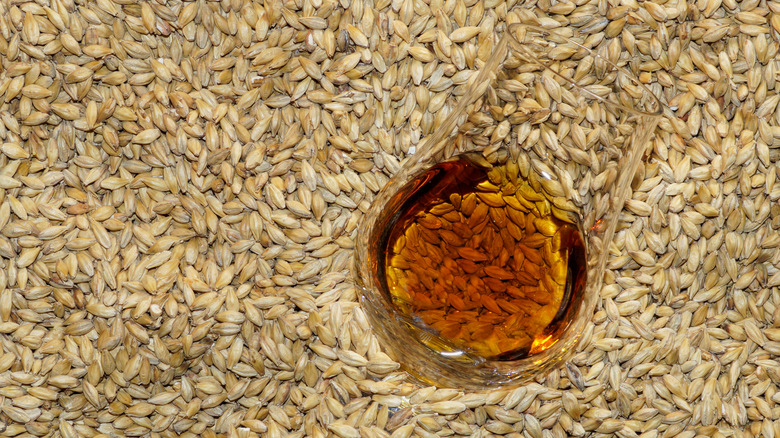Is Single Malt Actually Superior To Blended Whiskey?
Whiskey lovers everywhere appreciate this dark liquor for its warm, complex flavor notes and its supremely sippable qualities. Distilled from various types of fermented grain (whether corn, wheat, barley, or rye) and often aged in wooden barrels, whiskey is a diverse alcohol category that encompasses many spirits under one larger umbrella.
That's why you'll see all kinds of bottles lining the whiskey shelf at your local liquor store or stacked behind your favorite bar. If you're new to the world of whiskey, it can be a lot to keep track of — there are so many types of whiskey and so many factors that go into how they're differentiated. Take, for example, their blending process.
You may have noticed both blended whiskey and single malt whiskey on the shelf before, and like many others, you might assume single malt is somehow superior. Maybe it's because single-malt whiskey seems less abundant than blended whiskey and therefore more exclusive, or maybe "single malt" just sounds more pure and therefore of a higher quality. But the truth is, neither one is necessarily better than the other; it's just a matter of picking your poison.
Single malt vs. blended whiskey: production
What makes single malt whiskey "single malt" is twofold: first, the fact that it's produced at one single distillery; second, the fact that it's distilled from one single type of grain (most often malted barley). Something most people don't realize is that single malt whiskey can actually be a combination of different whiskeys, aged in different barrels for different lengths of time — as long as each whiskey was produced from the same type of grain at the same distillery. So single malt whiskeys are often blends themselves.
Blended whiskey, on the other hand, can be an amalgam of various whiskeys that come from different types of grains and distilled in different distilleries. The bottle should consist of at least 20% whiskey to be considered American blended whiskey. So it's true that some brands will add flavorings or neutral spirits to make up that remaining percentage, delivering a whiskey that doesn't contain much whiskey at all. But on the other side of the coin, high-quality brands will make 100% whiskey blends — so you just need to search for the good stuff.
Single malt vs. blended whiskey: taste
So how does all of this affect the final product that comes in the bottle? While every type of whiskey is unique depending on the types of grain used and the types of barrels they're aged in, there are certain nuances that come out of the way single malt and blended whiskeys are distilled. Which one is better all comes down to personal preference.
Single malt whiskeys tend to have a more pronounced and uniform flavor, which makes sense because they come from one type of grain. But because no two individual whiskeys will ever really be the same, with single malt, the complexity and flavors vary more from bottle to bottle. Many single malt whiskeys carry that strong oaky flavor from the barrel along with notes of caramel, vanilla, and nut (or that smoky peatiness in the case of single malt Scotch), and they're thought to impart a wider variety and depth of flavors.
Blended whiskey, which is usually crafted by the team effort of master blenders and skilled tasters, is created to achieve a certain consistency of flavors across a brand. They can carry slightly sweeter notes like cherry or chocolate, or taste more leathery or smoky, but overall blended whiskey tends to be smoother with a more mild flavor profile.


